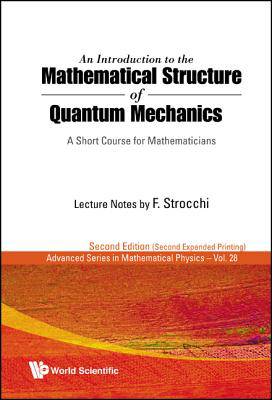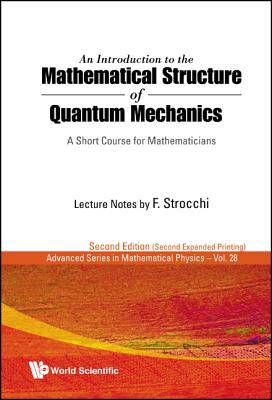
- Afhalen na 1 uur in een winkel met voorraad
- Gratis thuislevering in België vanaf € 30
- Ruim aanbod met 7 miljoen producten
- Afhalen na 1 uur in een winkel met voorraad
- Gratis thuislevering in België vanaf € 30
- Ruim aanbod met 7 miljoen producten
Omschrijving
The second printing contains a critical discussion of Dirac derivation of canonical quantization, which is instead deduced from general geometric structures. This book arises out of the need for Quantum Mechanics (QM) to be part of the common education of mathematics students. The mathematical structure of QM is formulated in terms of the C*-algebra of observables, which is argued on the basis of the operational definition of measurements and the duality between states and observables, for a general physical system.
The Dirac-von Neumann axioms are then derived. The description of states and observables as Hilbert space vectors and operators follows from the GNS and Gelfand-Naimark Theorems. The experimental existence of complementary observables for atomic systems is shown to imply the noncommutativity of the observable algebra, the distinctive feature of QM; for finite degrees of freedom, the Weyl algebra codifies the experimental complementarity of position and momentum (Heisenberg commutation relations) and Schrödinger QM follows from the von Neumann uniqueness theorem.
The existence problem of the dynamics is related to the self-adjointness of the Hamiltonian and solved by the Kato-Rellich conditions on the potential, which also guarantee quantum stability for classically unbounded-below Hamiltonians. Examples are discussed which include the explanation of the discreteness of the atomic spectra.
Because of the increasing interest in the relation between QM and stochastic processes, a final chapter is devoted to the functional integral approach (Feynman-Kac formula), to the formulation in terms of ground state correlations (the quantum mechanical analog of the Wightman functions) and their analytic continuation to imaginary time (Euclidean QM). The quantum particle on a circle is discussed in detail, as an example of the interplay between topology and functional integral, leading to the emergence of superselection rules and θ sectors.
Specificaties
Betrokkenen
- Auteur(s):
- Uitgeverij:
Inhoud
- Aantal bladzijden:
- 200
- Taal:
- Engels
- Reeks:
- Reeksnummer:
- nr. 28
Eigenschappen
- Productcode (EAN):
- 9789812835222
- Verschijningsdatum:
- 1/09/2008
- Uitvoering:
- Hardcover
- Formaat:
- Genaaid
- Afmetingen:
- 155 mm x 231 mm
- Gewicht:
- 476 g

Alleen bij Standaard Boekhandel
Beoordelingen
We publiceren alleen reviews die voldoen aan de voorwaarden voor reviews. Bekijk onze voorwaarden voor reviews.











